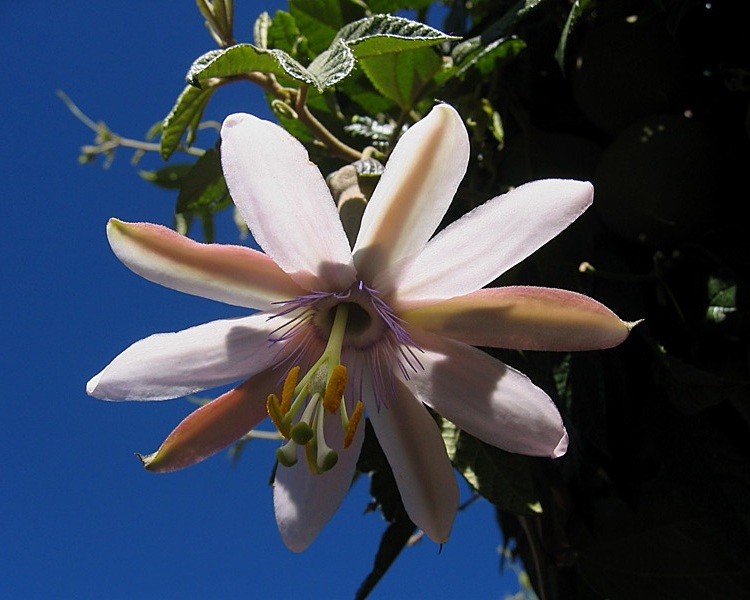Banana passionfruit
(Passiflora tarminiana)

Description
Passiflora tarminiana (or banana passionfruit) is a species of passionfruit. The yellow fruits are edible and their resemblance to small, straight bananas has given it the name banana passionfruit in some countries. It is native to the uplands of tropical South America and is now cultivated in many countries. In Hawaii and New Zealand it is now considered an invasive species. It was given the name banana passionfruit in New Zealand, where passionfruit are also prevalent. In Hawaii, it is called banana poka. In its Latin American homeland, it is known as curuba, curuba de Castilla, or curuba sabanera blanca (Colombia); taxo, tacso, tagso, tauso (Ecuador); parcha, taxo (Venezuela), tumbo or curuba (Bolivia); tacso, tumbo, tumbo del norte, trompos, tintin or purpur (Peru). Passiflora tarminiana is a high climbing vine with hairy stems and petioles. Where the petioles join the stem it has stipules which are 4–7 by 2–3 mm and are soon deciduous. The leaves are three-lobed and hairy below but usually hairless above. The flowers are solitary and hang downwards. The base of the flower has pale green bracts enclosing a swollen nectary chamber. The floral tube (hypanthium) is 6–8 × 0.7–1 cm and pale green, while the sepals and petals are 3–6 cm long, pink and perpendicular to the floral tube, or reflexed. Fruits taper at both ends, are 10–14 cm long by 3.5–4.5 cm wide and ripen to yellow or light orange. The fruit contain many seeds which are embedded in an edible, orange aril. Mollissima and its close relative Passiflora mixta are vines with cylindrical stems densely coated with yellow hairs, and are vigorous climbers, growing up to seven metres. The leaves are a shiny green with clearly defined veins, the flower is large, pink and green petalled with a yellow and white centre. The fruit is yellow-orange when ripe and contains a sweet edible orange-colored pulp with black seeds. Passiflora tarminiana is distinguished from P. tripartita var. mollissima by a number of features. P. tarminiana has small deciduous stipules while P. tripartita var. mollissima has larger, persistent stipules. The sepals and petals in P. tarminiana are perpendicular to the floral tube or are reflexed, whereas they are never so open in P. tripartita var. mollissima. They are also both much shorter in relation to the length of the floral tube in P. tripartita var. mollissima than in P. tarminiana.
Taxonomic tree:







